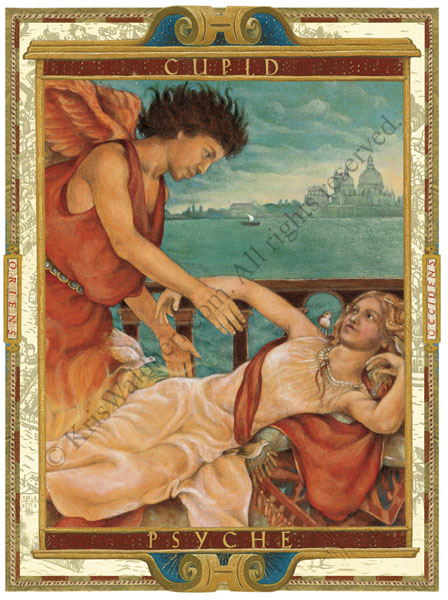publishing 101: letter to a new children’s book writer (with apologies to Rilke)
First things first: You are brave. You want to share your book with the world by having it published. It’s not enough for you to write and let your words linger in private. You want to make a child happy, to transform their understanding of the world — to inspire them. That is something to be applauded and encouraged.
You ask for how information on how to sell your book to a publisher. Well, I have to be honest: It’s not easy. I know that everyone has a story about someone they know who met an editor at a party and they got their book published like that. Sorry, exception to the rule. Ditto for J.K. Rowling.
But just because it’s hard to sell a book with a publisher doesn’t mean it’s not possible.
The not-so-good news: The publishing industry has changed dramatically since I started working in it way back when. Children’s books have gotten more commercial and celebrity driven — all those Harry Potters and Twilights have made publishers hungry for the big book that will make a lot of money. It used to be that children’s book publishers would be satisfied if a book broke even at 5,000 to 10,000 copies. Not any more. Publishers could also rely on selling a good portion of books to schools and libraries, but budget cuts have changed this. Selling to schools and libraries gave publishers the freedom to acquire books that spoke to a niche demographic, or were clearly educational. Again, not anymore.
Children’s book publishing these days is all about how well it sells in the chains, such as Barnes and Nobles or Borders. It gets more complicated since chains often order large quantities and then return said large quantities if they don’t sell within a 90 day window, which really wrecks a publisher’s bottom line. Publishing is one of the few industries where the product can be returned; usually they can’t be repurposed (ie: sold elsewhere) because they’re paper products and usually don’t hold up for repeated sellings. So that means books get remaindered or, worse, destroyed and the publisher is out of pocket. And yup, there’s Amazon, but that’s a whole other complicated issue.
Suffice to say that publishers have become more cautious. They try to publish books that they’re sure (as much as they can be!) will sell a lot of copies. These days, they’ll even consult with a Barnes and Noble rep before deciding to acquire a book from an author.
So why am I presenting you with all this doom-and-gloom? Is it to discourage you? It may seem that way, but that’s really not my style. I simply want you to understand what you’re up against, so you’ll understand the following:
Your book has to be the best it can possibly be before you send it to an publisher or a literary agent.
Make this your mantra. Publishers don’t care if your family or your child’s class likes your book. They don’t care that you’ve always wanted to write a children’s book. They care that they can sell your book, that there’s a market for it, that it’s good.
What do I mean by good? Look at children’s books that move you. Try to analyze what makes them work, what elevates them into essential contributions to children’s literature. Writing a good picture book or children’s novel is an art onto itself. Spend some time at your local children’s bookstore or library to familiarize yourself with the classics. Talk to the people who work there, who are passionate about children’s books. Some people think that because a children’s book is shorter it’s easier to write than a book for adults — not true.
Workshop with other children’s book writers. Join the Society of Children’s Book Writers and Illustrators (or SCBWI for short). They have programs, workshops and resources for those just getting into the biz to those who are already published authors. Just about everyone I know in the industry belonged to SCBWI at one time or another.
Educate yourself about the industry. One good website about children’s publishing is Harold Underdown’s site at http://www.underdown.org. He’s also written The Complete Idiot’s Guide to Publishing Children’s Books, an essential guide to children’s books which has been recently updated. (Don’t be discouraged by the title – you’re not an idiot!)
It’s great that you’re aware of similar books to your’s. This gives you the knowledge you need to shape your book differently — different focus, different structure, different pov. There are lots of books on your subject matter, so clearly there’s a market for them.
You mentioned hiring an illustrator for your picture book. Just so you know, you don’t need any illustrations to sell a picture book to a publisher. That’s the publisher’s job. But if you like, you can set up your manuscript as a 32 page book dummy on white paper; just indicate with words where you want the art to go. If you want to illustrate the book yourself, then just include one or two sample pieces of art.
In regards to setting up a book dummy, most picture books are 32 pages in length — sometimes 24 or 48, but that’s unusual. One classic book which describes how picture books are created is Uri Schulevitz’s Writing with Pictures: How to Write and Illustrate Children’s Books. It’s really written for illustrators, but writers of picture books can take away a lot here too.
Once you know that your book is (a) as good as it can be and (b) has a market, then you’re ready to send it out to a publisher! And that’s a whole other ball of wax.
I hope you find this helpful—and the very best of luck to you!


